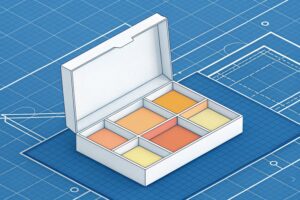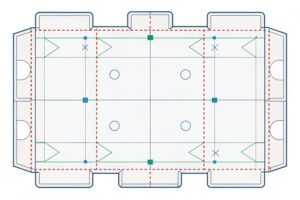カスタムインストアディスプレイはどのように行われますか?
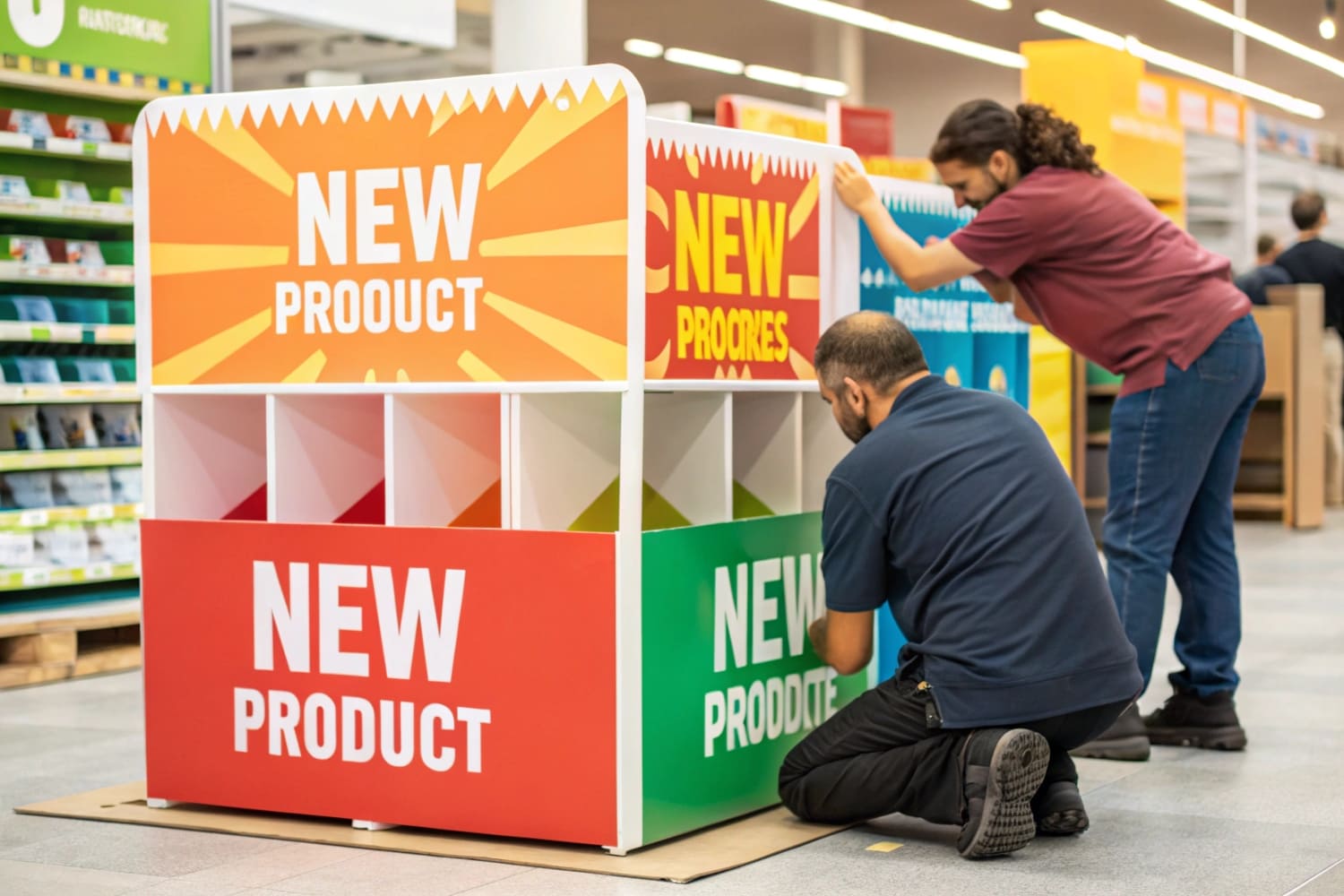
小売店に足を踏み入れると、製品を紹介するディスプレイに打たれることがよくあります。しかし、それらのディスプレイがどのように生き返るのか疑問に思ったことはありますか?何がそんなに魅力的なのですか?カスタム内のディスプレイを作成するプロセスは、見た目ほど簡単ではなく、創造性、エンジニアリング、戦略の融合です。
カスタムインストアディスプレイは、クリエイティブデザイン、戦略的計画、耐久性のある素材のブレンドを使用して作成されます。店のブランディングと消費者心理学の詳細な理解は、それらを効果的にする上で大きな役割を果たしています。
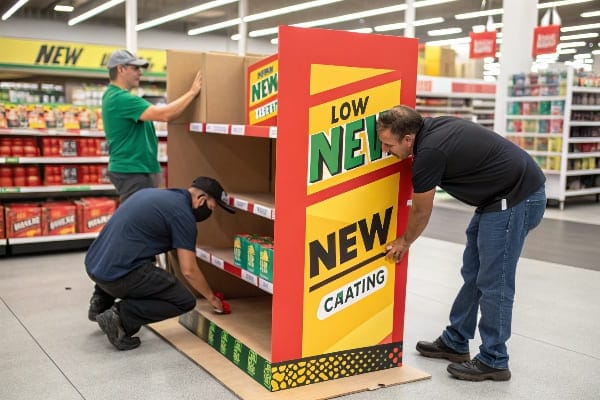
これらのディスプレイの作成方法を完全に理解するには、顧客にアピールし、全体的なショッピングエクスペリエンスを向上させるストアディスプレイを作成する方法に飛び込みましょう。
人々が好きなストアディスプレイを作成する方法は?
人々が楽しむストアディスプレイを作成するには、棚に製品を置くだけではありません。それは、ストーリーを語り、体験を作成し、顧客と感情的につながることです。ディスプレイが正しく行われると、人々が製品に停止し、見て、関与することを奨励します。
成功したストアディスプレイは、視覚的な魅力、相互作用、ストーリーテリングに焦点を当てています。顧客に行動を起こすように促しながら、注意を引いてブランドのイメージに合わせなければなりません。

人々が好きなディスプレイを作成するには、創造性と機能性のバランス1 。設計は注意を引く2ですが、それは目的にも役立つはずです。それは、製品3を、プロモーションを伝えたり、店舗のトラフィックを増やしたりするかどうかです。
成功したディスプレイの要素
色と照明4 :カラー心理学は、ディスプレイがどのように注意を引くかに大きな役割を果たします。明るい色は急いでいる人を引き付けるかもしれませんが、より柔らかいトーンは探検しようとしている顧客にアピールするかもしれません。照明は製品をポップにし、歓迎の雰囲気を作り出すことができます。
戦略的配置5 :ディスプレイの配置が重要です。それらを入り口、交通量の多いエリア、またはメインの通路に沿って配置すると、顧客の目を引く可能性が高まります。
ブランディング6:すべてのディスプレイは、ストアのブランディングを反映する必要があります。店のアイデンティティの一部としてすぐに認識できるはずです。
ストアディスプレイは何でできていますか?
店舗ディスプレイは、設計のニーズ、予算、予想される耐久性に応じて、さまざまな素材から作成されています。シンプルな段ボールディスプレイから金属や木材から作られた精巧な備品まで、選択された材料は美的目的と機能的な目的の両方を提供する必要があります。
店舗ディスプレイは、段ボール、アクリル、木材、金属などの範囲の材料で作られています。材料の選択は、ディスプレイの目的、場所、およびそれが持続するために必要な期間に依存します。
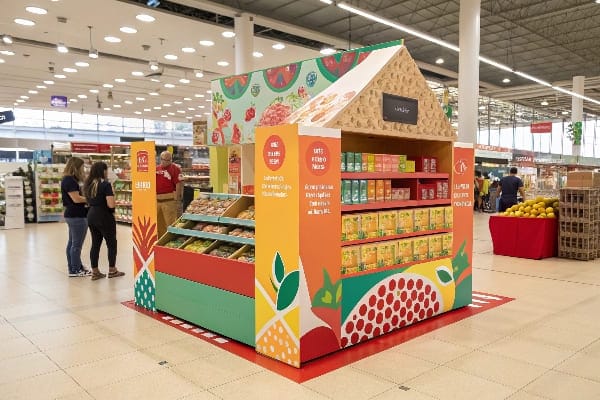
マテリアル選択7は、ディスプレイの全体的なパフォーマンスとスペースとの相互作用に不可欠です。たとえば、段ボールディスプレイ8は軽量で、カスタマイズが簡単で、費用対効果が高いため、プロモーションや限られたオファーに人気のある選択肢となっています。一方、アクリルディスプレイは、洗練されたモダンな外観を与え、多くの場合、プレミアム製品に使用されます。
主要な材料タイプとその用途
| 材料 | 長所 | に最適です |
|---|---|---|
| 厚紙9 | 軽量、カスタマイズ可能 | 短期プロモーション、季節のアイテム |
| アクリル10 | 透明で耐久性 | プレミアム製品、ハイエンドディスプレイ |
| 木材11 | 頑丈で高品質 | 長期ディスプレイ、ハイエンドストア |
| 金属 | 強く、長持ちします | 恒久的な備品、交通量の多いエリア |
素材の選択は、ディスプレイの外観、感触、および時間の経過とともに摩耗に耐える能力に影響を与えます。
誰が店でディスプレイをセットアップしますか?
ディスプレイのセットアップは、通常、社内の店舗のスタッフと視覚的なマーチャンダイザーやディスプレイ会社などの外部専門家の組み合わせによって行われます。これらの専門家は、ディスプレイがブランドに適合し、注目を集め、適切にインストールされていることを確認する責任があります。
ストアディスプレイは通常、視覚的なマーチャンダイザーまたは専門のディスプレイ会社の助けを借りて、社内スタッフによって設定されます。これらの専門家は、ディスプレイが機能的であり、ストアの目標と一致することを保証します。
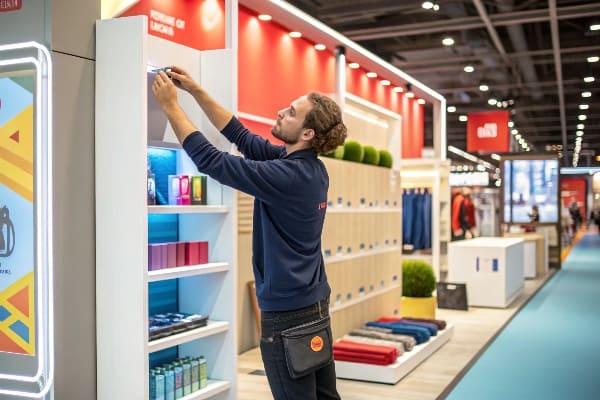
視覚的なマーチャンダイザーは、店の全体的な美学をキュレーションする上で重要な役割を果たします。彼らは店長と緊密に連携してレイアウトを決定し、スペースを過密にすることなく注意を引く方法で製品が表示されるようにします。、ディスプレイのセットアップのロジスティクスを処理するために、サードパーティディスプレイ会社12を雇うことさえあります
誰がセットアップに関与していますか?
- ストアマネージャー13 :一般的なセットアップを監督し、ディスプレイが店舗の目標を満たしていることを確認します。
- Visual Merchandisers 14 :ディスプレイを設計および実装し、ブランドのアイデンティティと製品のユニークなセールスポイントと緊密に連携しています。
- ディスプレイ会社15 :専門企業は、テーラードディスプレイを提供し、インストールを処理します。
適切なチームを持つことで、ディスプレイが人目を引くことができ、販売の推進に効果的であることが保証されます。
小売店はどのように商品を展示していますか?
小売店は、顧客エンゲージメントを最大化し、最終的に販売を促進することを目的とした方法で商品を展示しています。ディスプレイは、徒歩の交通を導き、買い物客を主要な製品に導くように慎重に配置されています。
小売店は、視界の高いエリアに製品を戦略的に配置することにより、商品を展示します。彼らは、視覚的なマーチャンダイジングの原則とテクノロジーの組み合わせを使用して、ショッピング体験を強化します。
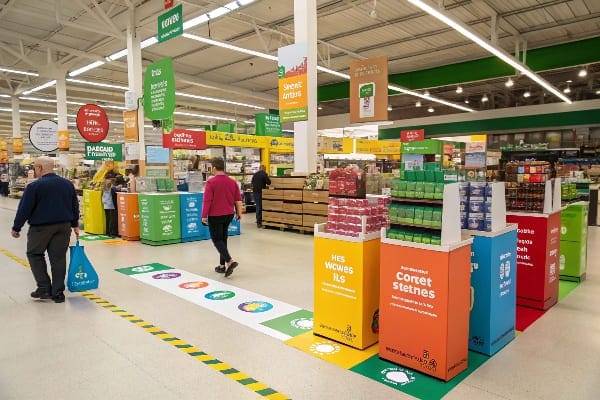
すべての小売ディスプレイ16は、目的で設計されています。衝動買いの17であろうと、プロモーションを強調したり、視覚的に魅力的な環境を作成したりするためであろうと、ディスプレイレイアウト18は顧客の行動を導くために不可欠です。
小売ディスプレイレイアウトの主要な原則
ゾーニング19 :これには、特定の種類の商品の特定の領域を作成することが含まれます。たとえば、新しい到着または季節のアイテムに特化したセクション。
製品グループ20 :同様の製品がグループ化されており、顧客が探しているものを見つけやすくします。また、異なる製品がどのように互いに補完するかを示すために、横断的なマーチャンダイジングも使用されます。
インタラクティブディスプレイ21 :タッチスクリーン、サンプル、または拡張現実を介して、顧客が製品に関与することができます。それはすべて、ショッピング体験をより没頭させることです。
正しく行われた場合、店舗ディスプレイはショッピングの旅を大幅に強化することができ、顧客が望むものを見つけやすく、より多くの購入を奨励することができます。
結論
店内でのカスタムディスプレイを作成するには、慎重な計画、適切な材料、および配置に対する戦略的アプローチが含まれます。それはすべて、顧客を引き付け、ショッピング体験を楽しく思い出深いものにする方法で店を導くことです。
このバランスを理解すると、デザインスキルが向上し、ディスプレイがより効果的で魅力的になります。 ↩
注意を引くための効果的な戦略を学び、ディスプレイデザインで顧客を引き付ける。 ↩
製品を効果的に紹介するテクニックを発見し、可視性と販売を増やします。 ↩
色と照明の影響を理解することで、ディスプレイ戦略を強化し、より多くの顧客を引き付けることができます。 ↩
ディスプレイ配置を最適化して、ストアの可視性と顧客エンゲージメントを最大化する方法を学びます。 ↩
顧客の認識と忠誠心を強化するために、ディスプレイのブランディングの重要性を探ります。 ↩
材料の選択を理解することで、ディスプレイのパフォーマンスと審美的な魅力を向上させることができ、効果的なマーケティングに不可欠です。 ↩
段ボールディスプレイは費用対効果が高くカスタマイズ可能であり、プロモーションや限られた時間のオファーに最適です。 ↩
軽量でカスタマイズ可能な性質を含む、ディスプレイで段ボールの利点を調べてください。プロモーションに最適です。 ↩
透明性と耐久性のために、アクリルがハイエンドディスプレイに好まれる理由を発見し、製品の視認性が向上します。 ↩
木材の頑丈さと高品質の魅力について学び、高級環境での長期的なディスプレイに最適です。 ↩
サードパーティのディスプレイ会社について学ぶことは、小売業者がディスプレイ戦略を最適化し、販売を改善するのに役立ちます。 ↩
店舗マネージャーの責任について学ぶことは、店舗運営と顧客体験への影響を理解するのに役立ちます。 ↩
視覚的なマーチャンダイザーの役割を理解することは、効果的な小売戦略に関する知識を高め、技術を表示することができます。 ↩
ディスプレイ会社の貢献を調査することで、効果的なディスプレイソリューションとインストールプロセスに関する洞察を提供できます。 ↩
小売ディスプレイのベストプラクティスを理解することで、マーケティング戦略を強化し、顧客エンゲージメントを向上させることができます。 ↩
衝動購入の影響を探ることは、販売戦略を最適化し、収益を増やすのに役立ちます。 ↩
効果的なディスプレイレイアウト戦略について学ぶことで、顧客体験と販売パフォーマンスを大幅に向上させることができます。 ↩
ゾーニングを理解することは、小売業者が店舗のレイアウトを最適化して、顧客エンゲージメントと販売を改善するのに役立ちます。 ↩
製品グループ戦略を探索することで、マーチャンダイジングアプローチを強化し、顧客満足度を高めることができます。 ↩
インタラクティブなディスプレイのトレンドを発見すると、小売戦略を高め、より魅力的なショッピング体験を作成できます。 ↩


